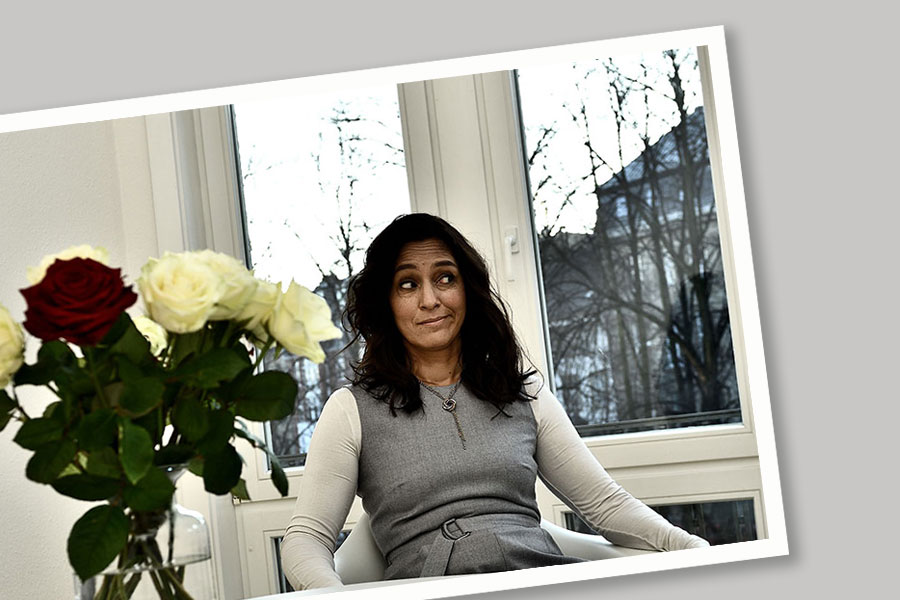“Tell me, is that your young sister in the photo?“ one of my esteemed customers, Mr. S., asks me when he recently looked at my consultant profile. His eyes move between the photo and my face in disbelief. “No, that is me,” I reply with a grin.
“But in the photo you don’t have any freckles.” Now I’m the one who is confused. I definitely do not have any freckles. “Oh, those are age spots?” the man with a PhD in Physics wants to know. He now realizes that I may be offended by his remark. Mr. S. seems embarrassed. I burst out laughing, because I am a fan of people being open and straightforward. So far, so good.
At the same time I couldn’t stop thinking about this short exchange. I felt a bit like an impostor. Ms. K. is pretending to be something she is not. That is a feeling I am rather familiar with. Consultants occasionally suffer from the so-called Impostor syndrome. Our customers are always asking us questions that are extremely relevant to them and sometimes we are unable to answer them. Because these questions refer to the future. Even consultants cannot predict the future, although we methodically analyze all the available information and have extensive information available. Deep down we sometimes worry that we are not worth our exorbitant daily fees. We occasionally hide this insecurity behind a shield that is often interpreted as arrogance. No matter how many training courses we attend, or which books we read during long-distance flights or at the weekend, we are always a little scared that we are basically useless and that one day our customers will find out. A lot of us are familiar with this feeling. However, it is a new realization for me that my fraud is already clear for everyone to see when taking one look at the photo in my consultant profile.
To eliminate any ambiguities: the photo we are talking about was taken two years ago by the photographer Cornelis Gollhart whom I very much admire and who takes professional photographs of a lot of managers. This was the work of a professional, Photoshop was not involved.
I am currently revising my homepage and took the opportunity to have new photos taken. I would like to give a likeable and professional impression in these photos. After all, I want to avoid a potential coachee running to the hills when he sees a picture of me. But I also want photos that save me from embarrassing moments like the one with Mr. S. This time I commissioned Dirk Schilling and told him – “I do NOT want to look particular good, I just want to look like myself.”
Dirk took very professional photos, in my opinion, which I first of all showed to my husband and one of my best friends to ask for their opinion. Their feedback – “Absolutely beautiful!” My response – “Oh NOOOOO!” As a husband and the best friend are never objective (but then again, who is?) I also asked some of my customers and colleagues for their opinion. The answers ranged from – “You are a beautiful woman, don’t be afraid to show it.” to “A consultant should not be too beautiful.” Is that true? A consultant should not be too beautiful?
One of my trainers, Erich Dihsmaier, believed that these days, consultants in companies have the same role that shamans had for indigenous people. In the olden days, who did people ask for advice when they had to cope with life-threatening (natural) events such as cold spells or heat waves? The person that survived them in the past: the oldest. This is what characterizes a shaman: he survived all others. This unconsciously leads to the belief that he must know some sort of a trick that guarantees survival. The answers that shamans gave in response to the questions people asked them varied in their quality. As did the methods they applied. Some found solutions to their problems by throwing chicken knuckles. Others identified patterns and regularities by observing nature. The parallels to the role of a consultant are obvious. We are often requested to help in crisis situations. Ideally we then reduce the complexity and find solutions to problems, sometimes using very questionable methods, while other times the methods are based on scientific evidence. With his inimitable sense of humor, Erich Dihsmaier stated that consultants automatically improve from year to year. His thesis was that customers believe that the more wrinkles and gray hairs consultants have, the more experienced and competent they are. At least more competent than kids fresh out of university. Exceptions confirm the rule. For magical topics involving anything to do with digital matters or 4.0, we tend to ask younger people.
Recently, however, beauty seems to be playing a role when it comes to shamans and I am still struggling to understand this. In addition to being competent we are to be beautiful – but not too beautiful. How much beauty is enough? And when is a shaman too beautiful? As Erich Dihsmaier sadly died much too young in 2012 I am unable to ask him about this. So now I sit here and my thoughts are running wild in my head. Should I simply no longer use a photo for my consultant profile and my homepage? Using the motto – “Sorry, I don’t have a photo for you.” There have been attempts in the past to no longer use photos in job applications in Germany. Whatever happened to that? Or should I just have new photos taken one more time? Maybe use a different photographer? But what if the photos are no good either? What if I don’t look like myself in them? Will no coachee ever choose me again? And what then?
If one of my coachees is plagued by thoughts that go round and round in his head leading nowhere, I recommend that he take a deep breath first of all. In a next step, I suggest that he should ask himself whether he actually has a problem. Our brain is a problem-solving organ. Its task is to identify danger and to find ways and means to eliminate it. If we don’t have any problems, then our mind makes them up. It seems it is scared of being unemployed. It therefore considers the past and starts thinking. Alternatively, it wanders off into the future and comes up with horror scenarios. In my personal horror scenario I live under a bridge and drink lukewarm red wine from a carton. I can almost taste its sweet stickiness. Just now an old couple walks past the bridge. He looks strikingly similar to Mr. S. and points at me. Then he shouts – “Look, it’s Ms. Keromosemito, the consultant with the fraudulent photo in her consultant profile!” They both shake their heads.
If one of my coachees was in this situation I would recommend that he return to reality. Which is – woman sits in front of a computer and types a text. She smiles about the silly thoughts that can come into our heads. She imagines that her text will put a smile on some of her readers’ faces. And she definitely does not have any problems! 90 percent of the dramas in our lives never took place, except in our head.
Photo: Dirk Schilling


